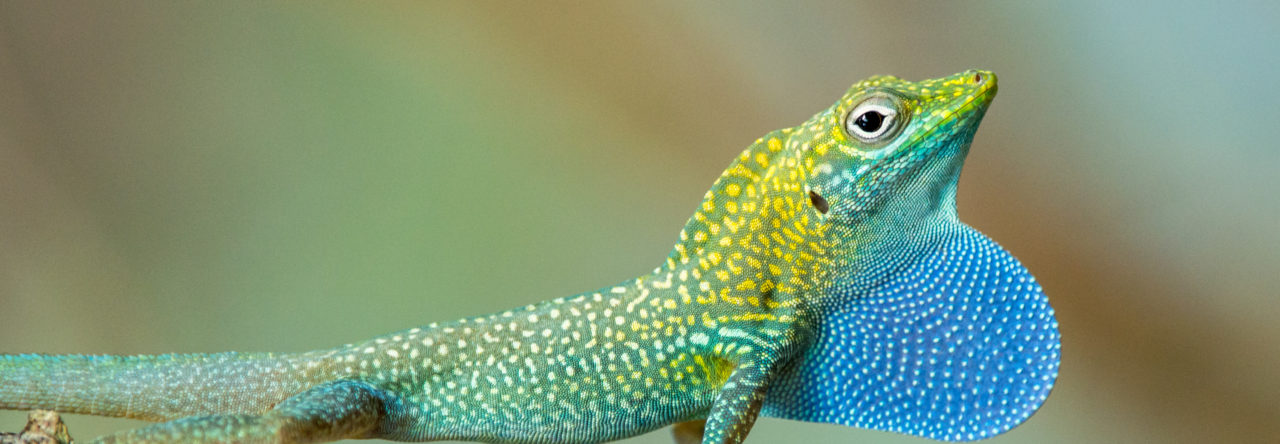

Clash of the Anole Titans
From the author of “Clash of the Anole Titans” comes this poetic tale of youth redeemed, power lost, and grace under pressure. Don’t miss it.
Latest posts by Jonathan Losos (see all)
- Evolution in Real Time on Lizard Island - March 23, 2025
- Spider Snags Adult Anolis osa - March 22, 2025
- An Homage to the Green Anoles of New Orleans - March 21, 2025


Peter Mudde
Nice story indeed, but.. What species is this? It doesn’t remind me of any A. carolinensis I have seen (pet-trade imports for 99%), but it looks like the mystery (to me..)-anole that was on a black/white picture in the (Dutch translation of..) Smith & Inger’s ‘Living Reptiles of the world’ which was there named ‘A. chlorocyanus’.
Janson
Heya, Peter. I’m pretty sure this was in fact A. carolinensis. These photographs were taken in Mt. Dora, Florida — a bit north of Orlando (well situated in the interior of central Florida). There are a ton of A. sagrei in the area, of course, but I’ve never seen A. chlorocyanus or any of the other Florida-invasive species so frequently seen down south in the Mt. Dora area. Also: these dudes sported the standard red dewlaps, though those photographs are a little less than lovely.
Having said all of that, I don’t usually see male Carolina greens crest so dramatically — except a number of times in south Florida. These two were in dire need of stress relief apparently. Heh. It was indeed quite epic!
Ah, Florida. The ecological free-for-all of the American south.
~ Janson
Yoel Stuart
I, also, rarely see A. carolinensis erect nuchal crests but they are definitely capable of doing so when they are really riled up. I have a few similar shots somewhere in my point-and-shoot archives. There is one taken by Casey Gilman on my website (http://www.oeb.harvard.edu/faculty/losos/stuart/Study_System.html). If I recall correctly, this male had just completed a pretty vicious fight with another male. They fought on out on the tips of a dead palm frond, which one could argue is structurally similar to reeds in a marsh. Check out his schnozz. It’s pretty scarred up, presumably from lots of fighting.
